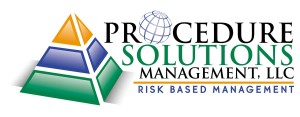Nuclear Promise – Procedure and Work Instruction’s Perfect Storm – Part 3

What are the real costs associated with maintaining thousands of documents required for the execution of operating and maintaining the plant?
Recap.
In part one, we voiced concerns regarding the nuclear industry’s “Nuclear Promise” and it’s negative impacts on procedures and work instructions. These concerns were based on my experience working with nuclear sites across the country. In short, procedures and work instructions that were successfully used many times over a number of years are, in many cases, no longer meeting the needs of the “new” qualified, but less experienced nuclear workforce. The primary findings focused on the areas of insufficient level-of-detail and usability issues (human performance errors).
In part two, we discussed writing staff, which have historically consisted of individuals dedicated to supporting procedure development and work planning. These individuals are now being impacted by “Delivering the Nuclear Promise” through reorganizations, early retirements, and significant changes in the experience levels of the end user.
As a result of responses to efficiency bulletins associated with “Delivering the Nuclear Promise,” more staff are performing this work as a part-time collateral duty. In many cases, they have had very little or no training in human factored writing, and are unfamiliar with the station’s procedure and/or work package writing quality requirements. Even more frequently, we are finding staff lacking the experience needed to effectively use tools such as MS-Word.
Part 3.
In this final part, we will discuss considerations that should be evaluated in order to strengthen procedures and work instructions as a continued commitment to excellence in safety and reliability. The considerations are focused on the core goals of regaining or remaining competitive while executing this critical business function.
The most frequent response when dealing with the business function responsible for procedures is to reduce or eliminate positions and shift the procedure writing function to the line staff as a new collateral duty. This type of organizational change does see a near term or immediate budget reduction. However, it is particularly problematic because of the additional stress on existing procedures and work instructions caused by the aging workforce and the new staff taking their place This stress causes significant challenges to adequate level-of-detail and usability, or what is typically described as human performance issues. Thus, the staff working on these critical documents are ill-prepared to support the increased demands created from the newer workforce in addition to their their existing responsibilities to maintain document back logs at or below industry benchmark levels.
So where do we go from here?
To develop a strategy that will realize true cost savings without jeopardizing safety, quality or creating human performance error-likely situations, staff should first understand the real costs associated with maintaining thousands of documents required for the execution of operating and maintaining the plant.
The true cost is not identified by looking at the existing head count and associated labor hours responsible for procedure creation and maintenance and then redirecting these labor hours to other work groups. Instead, look at the cost per page for a newly created or revised procedure. In order to determine the true costs the following questions should be evaluated:
- How much time does it take per page to create or revise a procedure? (Typically the labor hours range from .5 to.75 pages per hour for new and 1.4 to 1.6 pages per hour to revise.)
- When evaluating page counts per hour, current staff should be looked at individually to determine gaps in performance. When gaps are identified, are the tools or familiarity with the tools causing performance gaps identifying the need to look at the quality of the tools and/or training to improve performance and create greater consistency. For example, some plants will use a fillable form when writing procedures, generating a significant amount of manual actions needed to create consistent documents. In contrast, other plants will utilize a macro-enabled MS-Word template that provides automated features to reduce the labor of formatting.
- Does the site have a Content and Format Procedure to provide consistent guidance when developing procedures? If yes, does this procedure align with the latest industry standard guidance found in PPA AP-907.005 Writer’s Manual? When consistent guidance is provided for the format and content development of a procedure than less creative input is used that can cause fluctuations in labor hours based on what is thought as best intentions.
- When enhancements to procedures or work instructions are requested, is a cost versus benefit performed? Is the actual cost and benefit truly understood or is every change request accepted independent of the cost?
- If staff manual actions to create job steps in the text editor areas of Passport, Maximo, SAP etc. has historically been the norm, has any consideration been given to use a macro-enabled “automated” MS- Word template and create the instructions in MS-Word and place as an OLE document in order to minimize the labor expense?
- Has the technical review process for procedures or work instructions been evaluated for the cost of performance in addition to compliance with quality requirements and/or gaps to industry standards? Once the cost is understood, are program efficiencies available that can be implemented to lower the cost and improve quality?
These are just a few of the many questions we use to help our customers in making sound business decisions in order to raise the quality of the work performed and a focus on lowering the overall costs. Do you know how much it actually costs to create or revise a procedure or work instruction – per page?
In conclusion, the ultimate goal should be to produce the highest quality product at the lowest reasonable cost. Are you making money or spending it because “this is the way we have always done it?” Are you focused on lowering the costs over the long term or just looking for a quick cost reduction now?
Procedure Solutions Management has the unique ability to help you see what you can’t see for yourself when evaluating measures that can be taken to drastically lower the costs for maintenance and upkeep of procedures and work instructions.
If you like our content, subscribe to our blog using the link to the right of this post. Or, visit our services page for more information on our staffing, training, or consulting services.







